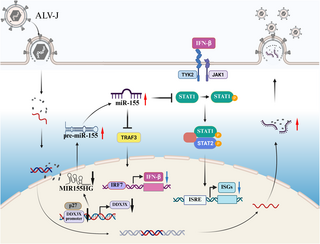In mid-November, the Food and Drug Administration (FDA) is expected to announce its decision regarding Biohaven Pharmaceuticals’ treatment for spinocerebellar ataxia (SCA), a rare and severely debilitating neurodegenerative disorder. This decision may serve as a significant indicator of the agency’s regulatory flexibility under its current leadership.
The path leading up to this decision has been anything but straightforward. Biohaven’s shareholders are expressing mixed feelings about the odds of approval, with one stating, “This is a really tough call. I’d say approval is a 50-50 shot, at best.” This sentiment echoes across the investor community, highlighting a growing atmosphere of uncertainty surrounding FDA rulings, particularly given the contentious nature of Biohaven’s data package.
Spinocerebellar ataxia, which affects coordination and balance, is a rare condition that currently has no cure. Patients often face significant challenges in performing daily activities, which can lead to a diminished quality of life. As a result, there is a pressing need for effective treatments.
Biohaven has made substantial claims about their treatment, seeking to demonstrate its efficacy and safety. However, families and patients affected by SCA are left waiting with bated breath, hopeful for positive news but unsure of the outcome. The decision could potentially reshape treatment options for those suffering from this challenging illness.
The FDA has recently been under scrutiny regarding its decision-making processes, particularly for pharmaceuticals targeting rare diseases. Advocates for patients argue that expedited processes should be employed to swiftly bring innovative therapies to market, thereby minimizing the suffering of patients stymied by illnesses with limited treatment options. Critics, on the other hand, caution against rushing approvals, emphasizing the necessity of rigorous safety and efficacy assessments.
As the mid-November deadline approaches, Biohaven is undoubtedly preparing for a crucial moment in its corporate history. The stakes are high not just for the company and its shareholders, but also for the broader community of SCA patients and their families. An approval from the FDA could pave the way for new hope and treatment avenues that could significantly alter the landscape of managing this neurodegenerative disease.
The high variance in opinions among shareholders underscores the unpredictable nature of FDA evaluations. While some investors may place bets on the company’s future based on optimistic speculation, others are likely hedging their investments due to the mixed data coming from Biohaven’s clinical trials. This creates an intricate dynamic as discussions heat up in investment circles about the implications of the FDA’s upcoming decision.
As the announcement date nears, all eyes will remain glued to the agency. Will the FDA lean towards industry innovation and provide a breakthrough for ailing patients, or will it prioritize stringent evaluation protocols, maintaining a more conservative stance? Regardless of the outcome, the implications of this decision are likely to reverberate throughout the pharmaceutical landscape, influencing not only Biohaven’s future but also the future of rare disease treatments at large.
Ultimately, the FDA’s ruling will tell us more than just whether Biohaven’s treatment for SCA can move forward; it will also signal how the agency plans to manage its dual responsibilities of fostering innovation while safeguarding public health. Patients, families, and investors alike are anxiously awaiting what this decision will reveal about the agency’s current regulatory philosophy. The months leading to this decision might be fraught with speculation and uncertainty, but the hope remains that a favorable decision could help light the way toward better treatment options for those suffering from spinocerebellar ataxia.






